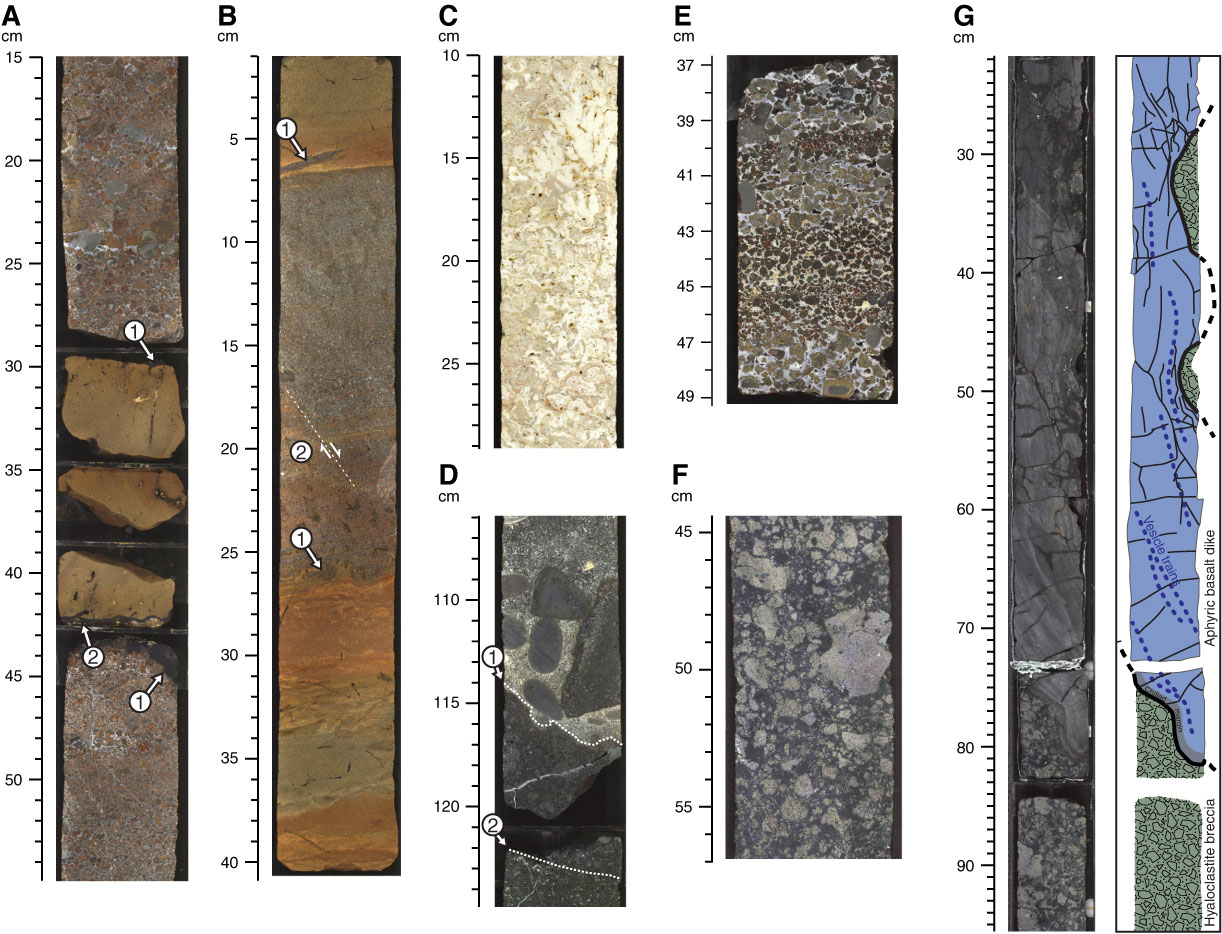
Figure F51. Scanned core images of select representative lithologies, Hole U1376A. A. Heterolithic layered multicolor basalt breccia (top and bottom) and heterolithic bioturbated volcanic sandstone (middle) from Subunit IA (interval 330-U1376A-1R-1, 15–55 cm). Arrows show (1) ferromanganese crusts and (2) nannofossil foraminiferal chalk in a ferromanganese crust. Subunit IA likely consists of several hyperconcentrated flow deposits (layered breccia) and turbidites (bioturbated sandstone) emplaced in a pelagic or hemipelagic environment. B. Monolithic bioturbated brown coarse tuff (top and bottom) and heterolithic multicolor volcanic sandstone (center) from Subunit ID (interval 330-U1376A-3R-4, 1–41 cm). Compaction features observed were (1) loadcasts and (2) a small synsedimentary fault. Subunit ID likely consists of turbidites and coarse tuff deposited in a hemipelagic or pelagic environment. C. Algal boundstone with a branching growth form of alga from Subunit IIA interpreted as an algal reef (interval 330-U1376A-3R-5, 10–29 cm). D. Basalt conglomerate with shallow-marine bioclasts from Subunit IIB showing erosional contacts in (1) basalt conglomerate and (2) underlying volcanic basement from Unit III (interval 330-U1376A-5R-3, 106–125 cm). E. Volcanic breccia composed of angular basalt clasts cemented with calcite from Subunit IC (interval 330-U1376A-1R-4, 37–49 cm; see also Fig. F53D). F. Hyaloclastite breccia from lithologic Unit 21 in stratigraphic Unit IV (interval 330-U1376A-16R-4, 45–57 cm). The yellowish-gray color in the clasts indicates the presence of fresh glass. G. Scanned core image (left) and interpretation (right) of aphyric dike margin from lithologic Unit 20 (interval 330-U1376A-15R-2A, 22–95 cm). Rows of dark blue dots = vesicle trains.

Previous | Close | Next | Top of page